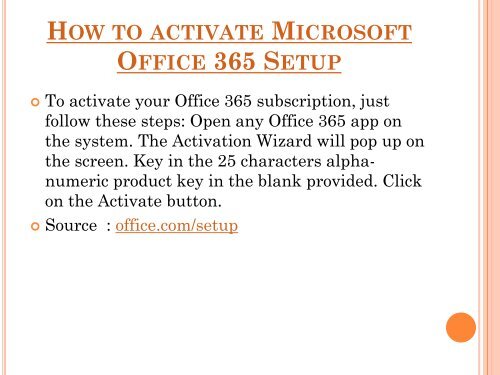- App Store For Mac
- Office App Store Mac Computer
- Office App Store Mac 10 13 6
- Office 365 Mac App Store Subscription
- Mac App Store Microsoft Office
When macOS Mojave’s Mac App Stores new look was unveiled during WWDC 2018 it was also announced that Microsoft would be bringing the Office suite to the Mac App Store.

Download to your iPhone or iPad the Office app now. To create or edit documents, sign in with a free Microsoft account on devices with a screen size smaller than 10.1 inches. Unlock the full Microsoft Office experience with a qualifying Microsoft 365 subscription for your phone, tablet, PC and Mac. Downloading apps requires an Apple ID. Pages for Mac, Numbers for Mac, and Keynote for Mac are available on the Mac App Store. MacOS Catalina or later required. Some features may require internet access; additional fees and terms may apply. In Apple® terms, it’s iTunes®, the Mac App Store, iBooks®, and the Apple Store® all rolled into one. However, in this blog post, I will focus mainly on apps available from the Microsoft Store. Accessing the Store. Just as Apple has the App Store app, Microsoft has the Microsoft Store app. (See Figure 1.). OpenOffice 4.1.9 - Free and open-source office suite. Download the latest versions of the best Mac apps at safe and trusted MacUpdate. My personal Mac email app of choice, and a solid alternative to more single-serving options like Airmail and Spark, Wavebox is a multi-purpose, Electron-powered web wrapper that lets you build.
Well, earlier this week the announcement was fulfilled.
See below for some information on how this might affect us admins as well as some things to consider.
Contents
- 2 So, I can now just deploy Microsoft Office from the Mac App Store?
- 3 Deployment
Microsoft have supplied a KB for use admins centred around deployment, which is available here.
The following has mostly come from the above, just expanded upon a little further.
Well, no.. or maybe.. erm, it’s not quite that simple.
There are a few things to be mindful of beforehand.
Version
Office 365 is the version of the Office suite which is available via the Mac App Store.
If you see the versioning section in my previous post on Microsoft Office, I mention the version 16.17+ being for both 2019 & O365. This is still correct but see below for a difference.
Licensing
Whilst these Mac App Store apps are the same version as the “2019” suite, the Mac App Store Office Apps cannot be volume license as per:
No. Perpetual licenses, including Office 2019 and Office 2016, are not supported with Office apps available from the Mac App Store. The Volume License (VL) Serializer is not compatible with these apps. Attempts to use a perpetual license with Mac App Store apps will cause the apps to enter reduced functionality mode.
https://docs.microsoft.com/en-us/deployoffice/mac/deploy-mac-app-storeOperating System Support
Again, in my previous post I mention which versions of the Office Suite support which versions of macOS.
And above I mentioned that, we’re looking at the current O365 version of the Office Suite.
So, it should make sense that the O365 apps available on the App Store support 10.12+ & up.
If you support older OS’s, (why?), then these are not for you.
Ok, so you’ve reviewed the above & still wish to go through with your deployment. Below are some more things to bear in mind.
VPP
As we’re talking about apps available on the Mac App Store, you’ll need an MDM/EMM to deploy these apps via VPP.
Another item to mention here is that VPP cannot do “Suites”, so instead of deploying the Office 365 Suite you’ll need to deployment the component apps one-by-one.
Migrating to the Mac App Store Office Apps
If you are already deploying O365 & wish to move to deploying the Apps via VPP, I’m afraid it’s not as simple as deploying the VPP apps on top.
Microsoft do mention this in a section of their KB, which I’ve quoted below:

There is no automated process for performing a CDN to Mac App Store conversion. Depending on your EMM’s capabilities, you may be able to orchestrate the process through a script. The high-level steps for each Mac are as follows:
1. Close all Office apps
2. Remove the Office apps from the /Applications folder
3. Remove the Office entries from the keychain
4. Remove the Office package registrations (pkgutil --forget)
5. Trigger the MDM server to install the Office apps (such as jamf recon)
The majority of the above is simple enough, but step 3 refers to items on the User Keychain.
Paul Bowden has a script which can be used for this, but depending on if a deployment is multi-user etc this might become a little complex. Especially if you’re looking to logout then perform the steps 2-5 above.
At dataJAR, I’ve tasked Darren with looking into this & if an elegant workflow is found he’ll post it on his blog.
Detection
If you’re not sure how the Office Apps installed on your devices were installed, Microsoft do note the following:
• Open Finder, and navigate to the Applications folder
• Locate the Office app (such as Microsoft Outlook.app), control-click, and choose Show Package Contents
• Navigate into the Contents folder
• If a folder named _MASReceipt is present, the app was downloaded from the Mac App Store
Reduced Functionality Mode
A valid O365 subscription is needed to be able to edit documents in Word, Excel & PowerPoint, or to send emails within Outlook.
This is important as you might deploy the O365 apps to a Mac, but those apps might not be activated via a valid subscription.
This might be due to the O365 apps not being activated by that user.
Or the VPP apps have been deployed to a Mac with a Volume License or a Volume License has been deployed post VPP app install.
App Store For Mac
Microsoft has another article on this, & you have two options if the above is the issue. Which depends on the end goal license:
- O365: Completely remove the Office Apps & keychain etc, as per these steps, then reinstall from the Mac App Store & activate via a valid O365 license.
- 2019: Completely remove the Office Apps installed from the Mac App Store, & re-install the “CDN” versions, as per these steps.

Well, at dataJAR, we are going to leverage VPP for all new O365 deployments.
For those we’ve historically deployed O365 apps from the “CDN” media, as the migration steps seem a bit of a faff & the end-user is getting the same versions, we’ll leave them as they are.

We’ll then review this if the migration steps become simpler.
Hello Andrea Maeda,
If I'm understanding you right, you're being asking to verify your license when using the Office 365 app that you downloaded from the Mac App Store. I'm happy to help you sort this out so you can start using that app the way you expected to.
Have you purchased a copy of Office 365 previously? Although the apps that come with Microsoft Office 365 (i.e., Word, Excel, PowerPoint, and Outlook) are free to download from the Mac App Store, you may have to purchase Office in order to activate them before you're able to use them. According to the Microsoft website, once you purchase Office you should be provided with a product key you can use to activate Office on your Mac. As you'll see in the description section of the Microsoft Office 365 app in the Mac App Store, Office 365 offers annual subscriptions that can be billed to your App Store account. You should be able to view more information about all of this here: Microsoft - Office install. If you need more help with activating Microsoft Office 365, reach out to Microsoft using the 'contact us' link at the bottom of that website.

Office App Store Mac Computer
Thanks for using Apple Support Communities.
Office App Store Mac 10 13 6
Office 365 Mac App Store Subscription
Take care!
Mac App Store Microsoft Office
Oct 11, 2019 4:24 PM
